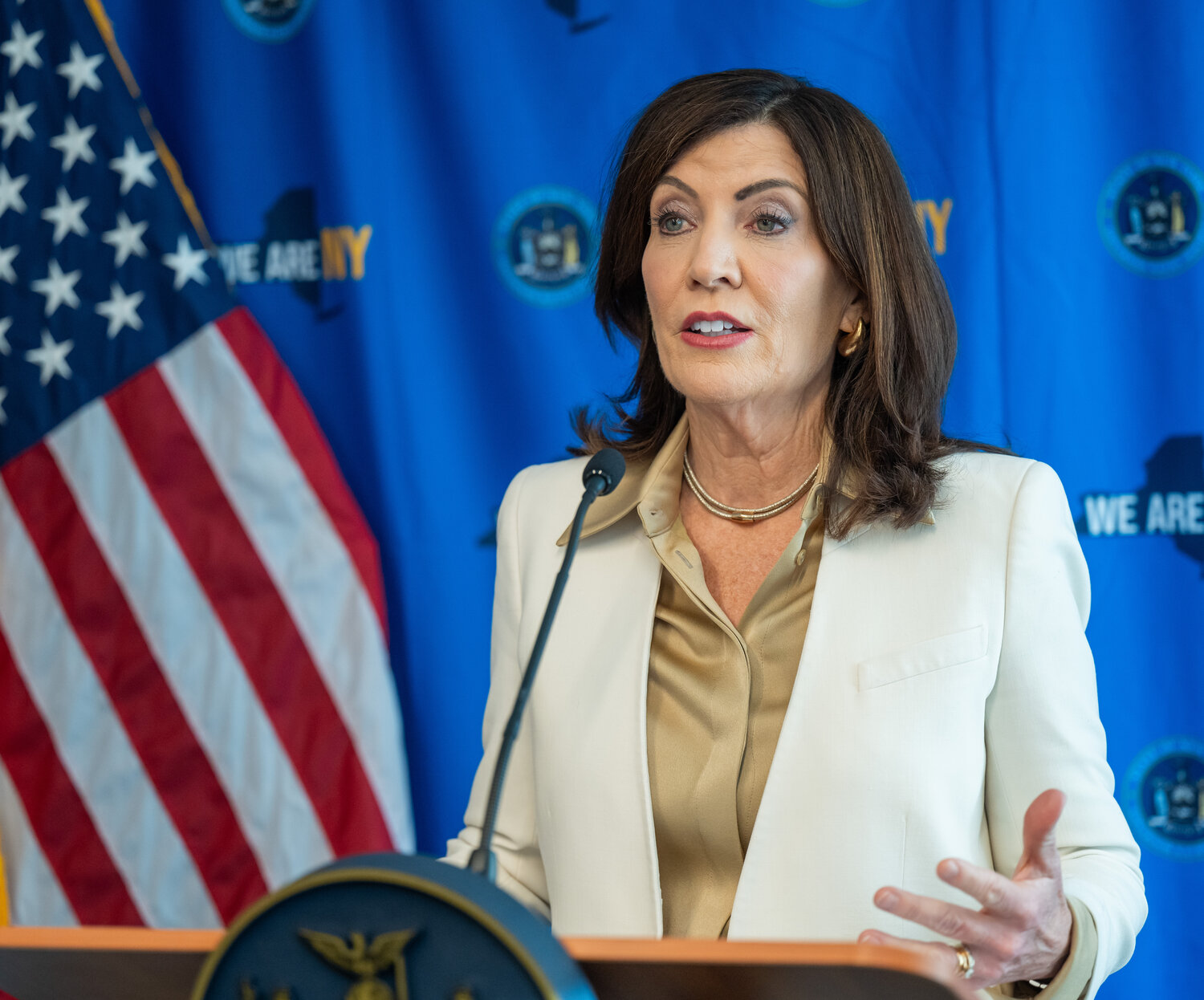Voting year for local elections shifts to 2026 in New York state
Gov. Kathy Hochul recently signed legislation aligning many odd-year local elections with statewide and legislative elections that are held in even-numbered years.
Hochul believes the bill will expand access to voting, and make it easier for New Yorkers to vote in local elections that directly impact their lives and the communities they live in.
The change will begin in 2026. The law will mean that elections for county executive, county legislatures and town board seats will be held at the same time as voting for state and federal offices.
The bill has been met with opposition from Long Island republicans, who say the shift will take the focus away from local candidates and drown out local issues.
“Local elections and issues will be pushed aside and forced down ballot by statewide and national issues,” Town of Hempstead Councilman Chris Carini, who represents the town’s 5th councilmanic district, said. “Gov. Hochul disregarded countless local governments and organizations who urged her to veto. Their concern is local elections and issues can’t compete with state and national campaigns.
“Issues such as park upgrades, local infrastructure, sanitation pickup (and) local budgets will be muted,” he added. “Local elections for towns and counties are no longer.”
According to the governor’s office, the legislation will impact all elections for which dates can be changed through legislative action — changing election dates for certain offices, including judgeships and offices in any city, must be done through a constitutional amendment.
“Gov. Hochul also announced her support for a future amendment to the New York State Constitution that would align elections for all offices — a fiscally responsible approach that would reduce the taxpayer cost of election administration by avoiding the need for elections to be held every single year,” a release from the governor’s office further states.
According to the state, elections in odd-numbered years increases the cost of participating in the voting process is higher, particularly for voters who may have a difficult time arranging for time off of work and traveling to their polling site.
“Democracy works best when all eligible voters can participate, and this new law advances New York State toward that goal,” the state says. “Other states and jurisdictions around the country have made similar common-sense adjustments to their election calendars and have subsequently seen significant increases in voter participation in local elections.’
The bill also aims to increase voter turnout, which is historically much lower during local election years. For example, millions more New Yorkers participated in elections in 2020 with an approximate 64 percent voter turnout. In 2021, 25 percent of eligible voters turned out to take part in local elections around the state.
“Every eligible New Yorker deserves the right to participate in the democratic process without unnecessary barriers,” Hochul said. “By signing this legislation, we are taking a significant step towards expanding access to the ballot box and promoting a more inclusive democracy. This is a meaningful first step and I would support a constitutional amendment to align all election years, to save taxpayer dollars and avoid voter fatigue.”
Assemblywoman Michaelle Solages, a democrat who represents the state’s 22nd district, which stretches from Valley Stream to Floral Park, said as representatives of diverse communities, the legislative caucus is dedicated to ensuring that every New Yorker has the opportunity to exercise their right to vote and participate in democracy.
“By streamlining the election process and aligning it with a period of heightened civic activity, New York state aims to strengthen voter engagement and empower disadvantaged communities to select accountable representation at the local level,” she said in the state’s release. “There is no doubt that this legislation is a positive win for the people.”
State Sen. Steve Rhoads, a republican who represents the state’s 5th district, which includes Bellmore, Merrick, Wantagh, Seaford and East Meadow, said the law is “governing against the will of Long Islanders, which is why they are being rejected locally at the ballot box.”
“Whether it is stacking the courts, redrawing Congressional lines — again — to favor Democrats or generating mass confusion with town and county elections, one-party rule in Albany is more concerned with gaming the system than they are about changing their own policies that have made Long Islanders and all New Yorkers less safe, less prosperous, and less free,” he said. “We can only hope that the courts reject this blatant attempt to drown out important local issues discussed in town and county elections by overpowering them with larger state and national issues for perceived political advantage.
“The public deserves to have the opportunity to discuss local town and county issues in the independent and uncluttered forum that odd-year elections provide.”

 46.0°,
A Few Clouds
46.0°,
A Few Clouds 





